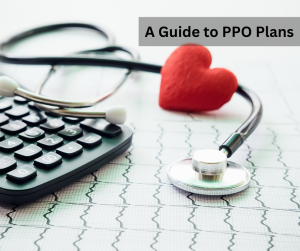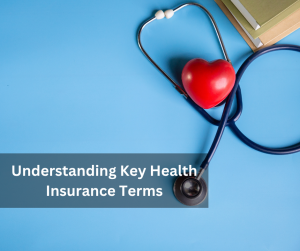
by admin | Sep 8, 2025 | Custom Content, Employee Benefits, Health Insurance

When navigating the world of health insurance, you will likely encounter the term PPO (Preferred Provider Organization). A PPO plan – whether medical or dental – is about balancing the cost and convenience of care. With a PPO plan, you get the flexibility to see a wide range of doctors. You’ll save money by staying within the plan’s network of preferred providers, but you can still choose to go out of network and receive partial coverage. Unlike some other plans, a PPO allows you to see specialists without a referral.
How a PPO Works
A PPO plan functions much like other health insurance plans, but with a key difference in how it handles providers. The plan pays its contracted providers a set, pre-negotiated rate for services. Because of this arrangement, you pay less in cost-sharing—such as copays or coinsurance—when you receive care from an in-network provider.
While PPO plans offer the flexibility to see out-of-network providers, your costs will be significantly higher. You will likely pay more and may need to submit an insurance claim yourself. It’s also important to note that most PPO plans have a separate out-of-network deductible that you must meet before your plan benefits will begin to cover those costs.
Key Advantages of a PPO Plan
PPO plans are often chosen for their flexibility and convenience. Key benefits include:
- No Referrals Needed: You do not need a referral from a primary care provider to see a specialist. You have the freedom to schedule an appointment with any in-network specialist at any time.’
- Out-of-Network Coverage: You can choose to see providers outside of the plan’s network, which is particularly beneficial for those who travel frequently or live in different states.
- Large Provider Networks: Many PPO plans have a broad, nationwide provider network, offering a wide range of choices for care.
- No PCP Requirement: Unlike some other plan types, you are not required to choose a primary care provider(PCP).
PPO vs. HMO: The Main Differences
The primary difference between a PPO and an HMO (Health Maintenance Organization) plan lies in their approach to networks and referrals.
An HMO plan typically provides coverage only for services received from providers within its network, except in emergency situations. You are also required to choose a primary care provider and obtain a referral to see a specialist. HMO plans often come with lower premiums, but they offer less flexibility.
A PPO plan, on the other hand, gives you greater freedom. You can see specialists without a referral and have coverage for out-of-network care (albeit at a higher cost). While premiums are generally higher for a PPO, the added flexibility can be a major advantage for those who prioritize choice in their healthcare.
Ultimately, choosing the right health and dental plan depends on your individual needs and priorities. By understanding the core principles of a Preferred Provider Organization, you can make a more informed decision that aligns with your lifestyle and ensure you get the most value from your benefits.

by admin | Aug 26, 2025 | Custom Content, Employee Benefits, Health Insurance
 Ever found a confusing document in your mailbox after a doctor’s visit, wondering if it’s a bill, especially with an “amount you owe” at the bottom? You’re not alone! That document is most likely an Explanation of Benefits (EOB) from your health insurance company. It’s crucial to remember: an EOB is NOT a bill.
Ever found a confusing document in your mailbox after a doctor’s visit, wondering if it’s a bill, especially with an “amount you owe” at the bottom? You’re not alone! That document is most likely an Explanation of Benefits (EOB) from your health insurance company. It’s crucial to remember: an EOB is NOT a bill.
Think of your EOB as a detailed receipt or a comprehensive financial statement from your insurance provider. It breaks down the services you received, how much your healthcare provider charged, how much your health plan covered, and any portion you’re responsible for paying. It’s an essential tool for transparency and helps ensure accuracy in your medical billing.
How EOBs Work
The process generally follows these steps:
- Provider Bills Your Insurer: After your medical service, your healthcare provider submits a claim to your insurance company.
- Insurer Processes and Sends EOB: Your insurance company processes the claim, determines coverage based on your plan, and then sends the EOB to you.
- Bill Arrives Separately: You will receive a separate bill from your healthcare provider for the amount you owe after you’ve received and reviewed your EOB. It’s a good practice to wait for your EOB before paying any medical bill to compare the two documents.
What Information Will You Find on an EOB?
While the exact format can vary, most EOBs include similar key sections:
- Account Summary: This lists basic details like the patient’s name, the date(s) of service, and a unique claim number.
- Claim Details: This section provides a breakdown of the specific services you received, including procedure codes, the dates services were provided, and the healthcare provider’s name.
- Amounts Billed & Covered: This crucial part details:
- The total amount your provider charged for each service.
- The amount your health plan paid or approved.
- Any discounts or adjustments negotiated by your insurance company.
- The reason if any portion of the service was not covered (e.g., “not a covered service,” “deductible not met”).
- Your estimated patient responsibility, which is the “amount you owe.”
Remember, insurance rarely covers 100% of costs. Your out-of-pocket expenses will depend on your specific plan’s structure, including:
- Deductible: The amount you must pay for covered healthcare services before your insurance plan begins to pay.
- Copay: A fixed amount you pay for a covered healthcare service, like a doctor’s visit or prescription, usually paid at the time of service.
- Coinsurance: Your share of the costs of a healthcare service, calculated as a percentage (e.g., 20%) of the allowed amount for the service after you’ve met your deductible.
Why Your EOB is So Important
Regularly reviewing your EOB offers several critical benefits:
- Catching Errors: Medical billing errors can occur. Your EOB acts as a window into your medical billing history, allowing you to cross-reference the services listed against what you actually received. You can verify that procedures and diagnoses are coded correctly, potentially saving you money.
- Understanding Your Plan: EOBs provide transparency in the often-complicated world of healthcare finances. By understanding what your plan covers and why certain amounts are or aren’t paid, you gain a clearer picture of how your health insurance truly works.
- Financial Control: Knowing what an EOB is and understanding its contents empowers you to stay in control of your healthcare expenses, ensuring you maximize your benefits and only pay what you genuinely owe.
While an EOB might seem intimidating at first glance, taking the time to understand this document is a vital step in becoming a more informed and empowered healthcare consumer. It’s your financial roadmap to navigating your health plan effectively!

by admin | Aug 4, 2025 | Custom Content, Employee Benefits
 Employers will see several changes to their health and welfare benefits due to comprehensive new tax and spending legislation. This includes notable improvements to Health Savings Accounts (HSAs), Dependent Care Flexible Spending Arrangements (DCFSAs), and employer-provided student loan payments, as well as the introduction of some new fringe benefit choices.
Employers will see several changes to their health and welfare benefits due to comprehensive new tax and spending legislation. This includes notable improvements to Health Savings Accounts (HSAs), Dependent Care Flexible Spending Arrangements (DCFSAs), and employer-provided student loan payments, as well as the introduction of some new fringe benefit choices.
These updates introduce significant changes to employee benefits. These changes are part of a comprehensive legislative package enacted on July 4, 2025 and will require employers and employees to adjust their understanding and utilization of benefit programs. Some of the most notable provisions are:
- Health Savings Accounts (HSAs) can now cover Direct Primary Care (DPC) fees, up to $150/month for individuals and $300/month for families.
- The telehealth exception for high-deductible health plans (HDHPs) is now permanent, ensuring continued access to virtual care. Employees with HDHPs will have first-dollar coverage of most telehealth services, before meeting their HDHP deductible.
- The dependent care FSA limit has increased from $5,000 to $7,500 ($3,750 for married filing separately), a boost for working parents.
- Bronze and catastrophic ACA exchange plans are now HSA-qualified.
- The tax exclusion for employer-sponsored health insurance remains intact, a win for traditional group benefits.
- Permanent exclusion for student loan assistance allows for a tax exclusion of up to $5,250 per year for employer payments of student loans and offers long-term support for employees managing student debt.
- New tax-advantaged accounts for children (a.k.a. “Trump Accounts”) are individual retirement accounts (IRAs) for children under 18 with an annual contribution cap of $5,000. These accounts allow for employers to contribute up to $2,500 per employee. Additionally, children born between January 1, 2025, and December 31, 2028, are eligible to receive a one-time $1,000 government contribution.
These changes are important as they significantly impact the employee benefits landscape. They also enhance access to care, reduce wait times, and provide greater flexibility, cost savings, and options for both employers and employees. By leveraging these updates, organizations can elevate employee well-being while remaining tax-compliant and strategically competitive.

by admin | Jul 15, 2025 | Custom Content, Employee Benefits
 Want to attract and keep top talent? Your benefits package is crucial! Think beyond just health and retirement. Fringe benefits like Dependent Care Assistance Programs (DCAPs) offer real, meaningful support, especially for employees caring for kids or dependent adults.
Want to attract and keep top talent? Your benefits package is crucial! Think beyond just health and retirement. Fringe benefits like Dependent Care Assistance Programs (DCAPs) offer real, meaningful support, especially for employees caring for kids or dependent adults.
What is A DCAP?
A DCAP – also known as a dependent care flexible spending account (DCFSA) (since it functions similarly to a health flexible spending account (FSA)) – helps to ease the financial burden. This program allows employees to set aside pre-tax dollars specifically for eligible dependent care expenses, providing a substantial financial advantage. Through convenient payroll deductions, employees contribute pre-tax funds to this account. These funds can then be used to reimburse them for qualifying expenses such as daycare, babysitting services, or after-school programs.
DCAPs can be standalone benefits or part of a larger “cafeteria plan.” Regardless, they operate under strict IRS rules to ensure proper use of the funds.
What Expenses Qualify for Reimbursement?
To qualify for reimbursement, the expense must be directly related to care that enables the employee (and their spouse, if applicable) to work or look for work. Reimbursement is provided after the care has been rendered.
Eligible Expenses Include:
- Preschool, nursery school, or similar programs (below kindergarten level).
- Before- and after-school care for children.
- Day camps, including specialized camps (e.g., sports, computer).
- Transportation to and from the place of care, if provided by the care provider.
- Employment taxes paid to a caregiver.
- Room and board for a caregiver (in specific cases).
- Application or agency fees related to finding care.
Ineligible Expenses Include:
- Kindergarten tuition or higher education costs.
- Overnight camps.
- Payments made to an employee’s spouse or the child’s other parent (if not their spouse).
Who Qualifies as a Dependent?
Employees can utilize DCAP funds for:
- A dependent child under the age of 13.
- A spouse or dependent who lives with the employee and is physically or mentally unable to care for themselves.
It is important for employees to note that eligibility is calculated on a daily basis. For example, reimbursement cannot be sought for expenses incurred after a dependent’s 13th birthday.
Contribution Limits
Internal Revenue Code Section 129 sets annual contribution limits for DCAPs, ensuring tax compliance:
- Up to $5,000 per year for employees who are single or married filing jointly.
- Up to $2,500 per year for employees who are married filing separately.
These pre-tax contributions are a significant advantage, reducing an employee’s taxable income and thereby increasing their take-home pay. It’s also important for employees to understand that the same expenses cannot be claimed for both a DCAP and the federal dependent care tax credit.
DCAP contributions must be used for eligible care expenses within the coverage period, or they are forfeited. This is often referred to as the “use it or lose it rule.” While a 2.5-month grace period for incurring and submitting claims is permitted, DCAPs do not allow carryovers of unused funds to the next plan year. Additionally, a DCAP is not portable – meaning that if an employee leaves, the funds are forfeited.
Maximizing Benefits for Employees
Offering a DCAP provides meaningful support to employees, whether they are new parents, caring for a loved one with special needs, or simply seeking ways to manage household budgets more effectively. It is a valuable tool that helps team members save money while managing essential care costs.

by admin | Jun 30, 2025 | Custom Content, Employee Benefits
 Selecting the right health insurance plans for your family is a critical process that requires careful attention from start to finish. Navigating health insurance becomes much simpler when you understand its terminology. Making sense of these terms empowers you to better understand your costs, benefits, and even estimate the price of a doctor’s visit.
Selecting the right health insurance plans for your family is a critical process that requires careful attention from start to finish. Navigating health insurance becomes much simpler when you understand its terminology. Making sense of these terms empowers you to better understand your costs, benefits, and even estimate the price of a doctor’s visit.
Premium: Your Insurance Payment: The premium is the regular payment you make to an insurance company to maintain your coverage. When you get insurance through your employer, they will specify how much of the premium you are responsible for, and this amount is typically deducted from your paycheck before your taxes are calculated.
Copayment : A copayment, often called a copay, is a specific amount you pay for a covered healthcare service, and it’s usually due when you receive that service. The amount of the copay can be different for different types of care.
Copay Example: For her son’s pediatrician visit for the flu, Heather had a $15 copay that she paid at the time of the appointment.
Deductible: A deductible is the amount you pay for healthcare services each year before your insurance starts covering costs.
Deductible Example: Ashley has a $1,000 annual deductible. Her first arm surgery costs $800. Since she hasn’t met her deductible yet, she pays the full $800.
Coinsurance: Coinsurance is the percentage of the allowed cost for a covered healthcare service that you’re responsible for paying after you’ve paid your deductible.
Coinsurance Example: Ashley’s next surgery costs $3,200 (the allowed amount). She has already paid $800 of the $1,000 deductible so she is responsible for the first $200 of the second surgery. Her insurance has an 80/20 coinsurance split. This means they pay 80% ($2,400), and Ashley pays 20% ($600).
Out-of-Pocket Maximum (OOPM): The OOPM is the maximum amount you’ll pay for covered healthcare costs in a year, not counting your monthly premium. It acts as a financial safety net against very expensive medical care. After you reach your yearly OOPM, your insurance pays 100% of covered costs for the rest of the year. Be aware that some plans have rules about what expenses count towards your OOPM; for instance, some might not include your deductible.
OOPM Example: Ashley has a $3,000 out-of-pocket maximum and has paid $1,600 so far. Her next surgery costs $8,000. She will pay her 20% coinsurance until her total out-of-pocket reaches $3,000. She has $1,400 left to pay. After that, her insurance covers the remaining $6,600.
Preventive Care: Preventive care focuses on staying healthy and catching illnesses early. It includes medical tests, vaccines, screenings, and medications designed to prevent chronic diseases. The goal is to identify and treat health issues in their most manageable stages. Under the Affordable Care Act (ACA), most health insurance plans must cover a range of preventive services without charging copays, deductibles, or coinsurance.
Preventive Care Example: Lori makes an appointment for her yearly check-up and a mammogram with a doctor in her network. Since these are preventive services covered by the ACA, Lori pays nothing – her health insurance covers the full cost.
Other Benefits Terminology
Pre-existing Condition: This is any health issue (physical or mental, including disabilities) you had before your health plan started. Since 2014, most insurers can’t deny coverage or charge more for pre-existing conditions, unless you have a “grandfathered” plan.
Grandfathered Plan: This is a health plan that existed before the ACA (2010) and hasn’t changed much since. These plans don’t have to follow all of the ACA’s rules.
Summary of Benefits and Coverage (SBC): The SBC is a straightforward document that outlines the costs and coverage of a health plan in an easy-to-compare format.
All those healthcare acronyms and terms might seem overwhelming but taking the time to learn them can put you in control. Understanding the lingo makes it easier to pick a health plan that meets your individual needs and budget!

by admin | Jun 10, 2025 | Custom Content, Employee Benefits
 The word “cancer” carries a weight that extends far beyond its medical implications. Beyond the physical and emotional toll, a cancer diagnosis can bring significant financial strain. While your primary health insurance will cover many treatment costs, there are often substantial out-of-pocket expenses that can quickly add up. This is where cancer insurance comes in. But what exactly is it, and how does it work?
The word “cancer” carries a weight that extends far beyond its medical implications. Beyond the physical and emotional toll, a cancer diagnosis can bring significant financial strain. While your primary health insurance will cover many treatment costs, there are often substantial out-of-pocket expenses that can quickly add up. This is where cancer insurance comes in. But what exactly is it, and how does it work?
What is Cancer Insurance?
Cancer insurance is a type of supplemental health insurance policy designed to provide financial assistance specifically if you are diagnosed with cancer. It’s not a substitute for comprehensive health insurance but rather an additional layer of protection to help manage the costs associated with cancer treatment and recovery. These policies typically pay out a lump-sum benefit or provide ongoing payments upon a cancer diagnosis that meets the policy’s definition.
Think of it as a financial safety net tailored to the unique challenges of battling cancer. The funds received from a cancer insurance policy can be used for a variety of expenses that your primary health insurance might not fully cover, such as:
- Deductibles and Coinsurance: Even with good health insurance, you’ll likely have deductibles and coinsurance amounts to pay.
- Lost Income: If you or your caregiver need to take time off work for treatment and recovery, it can lead to a significant loss of income.
- Travel and Accommodation: Traveling to specialized treatment centers can incur substantial costs for transportation, lodging, and meals
- Experimental Treatments: Some cutting-edge or experimental treatments may not be fully covered by standard health insurance.
- Other Living Expenses: The financial burden of cancer can extend to everyday expenses like groceries, utilities, and transportation.
How Does It Work?
- Purchase a Policy: You buy a cancer insurance plan through an insurer, often as an add-on through your employer or directly as an individual.
- Pay Monthly Premiums: Like other insurance policies, you’ll pay a regular premium to maintain coverage.
- Get Diagnosed: If you’re diagnosed with cancer while your policy is active, you file a claim. Cancer insurance will generally only pay benefits for the first occurrence of cancer and will not provide benefits if you have already been diagnosed before purchasing the insurance.
- Receive Benefits: Depending on your policy, you may receive a lump sum or payments for specific treatments and services.
While no one wants to imagine facing cancer, being prepared can make a significant difference. Cancer insurance helps reduce the financial stress of a diagnosis, allowing you to focus more on recovery and less on expenses. However, it’s essential to review your current health coverage and weigh whether supplemental cancer insurance fits your needs and budget.







